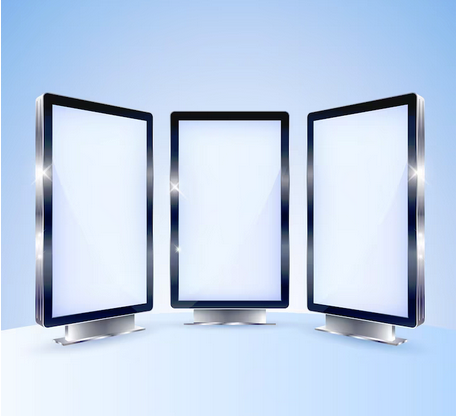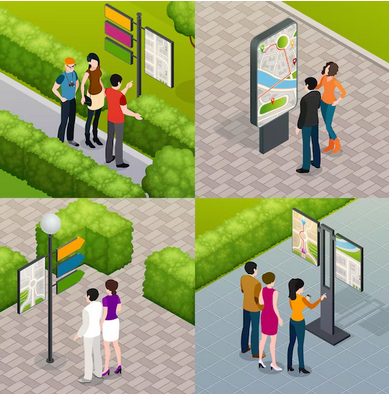The Power of 3D Animated Digital Billboards in Advertising
Table of Contents
Digital video billboards have become a popular advertising medium in recent years, thanks to their ability to deliver high-impact messages to a wide audience.
With advancements in technology, digital billboards have evolved from static displays to dynamic and interactive platforms that engage audiences with visually stunning content.
One of the key drivers of this evolution has been the use of 3D animation, which has revolutionized the way advertisers create and deliver content.
In this article, we explore the power of 3D animated digital billboards in advertising, and how they are transforming the outdoor marketing landscape.
The Advantages of Digital Billboards

Digital video billboards offer several advantages over traditional forms of video advertising, such as print and television. One of the biggest advantages is their ability to capture attention and deliver messages with high impact. Here are some of the key advantages of digital billboards:
High Visibility:
Digital video billboards are strategically placed in high-traffic areas, ensuring maximum visibility and exposure to a wide audience.
Customization and Flexibility:
Digital billboards offer advertisers the ability to customize and update their content in real-time, allowing them to target specific audiences and events with tailored messages.
Cost-Effectiveness and ROI:
Video billboards have lower production and maintenance costs compared to traditional billboards, resulting in a higher ROI for advertisers.
3D Animation Techniques for Digital Billboards

One of the key factors that sets digital video billboards apart from other forms of advertising is the use of 3D animation.
With the help of animated video, digital billboards can deliver visually impressive content that captures the attention of audiences.
Here are some of the techniques used in 3D animation for digital billboards:
Modeling:
3D modeling involves creating digital 3D models of objects, characters, and environments that are used in animated videos. This technique allows advertisers to create realistic and visually appealing content that engages audiences.
Texturing:
Texturing involves adding surface details and textures to 3D models, such as skin, hair, and clothing. This technique adds realism and depth to animated content, making it more engaging and memorable.
Rigging:
Rigging involves creating a digital skeleton for 3D models, which allows animators to control the movement and expression of characters and objects. This technique enables advertisers to create dynamic and realistic animations that capture the attention of audiences.
Animation:
Animation involves creating movement and action in 3D models, such as walking, jumping, and dancing. This technique brings animated content to life, making it more engaging and memorable.
Visual Effects:
Visual effects are special effects that are added to 3D animation to create stunning and realistic imagery. These effects can include particle effects, lighting effects, and camera effects, which add depth and dimension to animated content.
Interactive and Dynamic Digital Billboards

Interactive and dynamic digital billboards take advertising to a whole new level, allowing audiences to engage with content in real-time. This type of advertising is highly effective in capturing attention and driving engagement, as it allows audiences to interact with brands in a more meaningful way.
Here are some of the ways interactive and dynamic digital billboards are being used:
Interactive Features:
Interactive features, such as touchscreens and motion sensors, allow audiences to interact with digital billboards in real-time. Interactive video advertising is highly effective in capturing attention and driving engagement, as it allows audiences to interact with brands in a more meaningful way.
Example:
Real-Time Data:
Digital video billboards can be programmed to display real-time data, such as weather, traffic, and social media trends. This type of advertising is highly effective in targeting specific audiences and events with tailored messaging.
Dynamic Displays:
Dynamic displays use motion graphics and visual effects to create visually stunning and engaging content that captures the attention of audiences. These displays are highly effective in conveying messages with impact, as they use a combination of text, graphics, and animation to deliver content.
Cutting-Edge Technology in Digital Billboards
Cutting-edge technology is driving innovation in the digital video billboard industry, enabling advertisers to create even more impactful and engaging content. Here are some of the cutting-edge technologies that are transforming digital billboards:
Artificial Intelligence:
Artificial intelligence (AI) is being used to create more personalized and targeted advertising. By analyzing data such as audience demographics, location, and behavior, AI algorithms can create content that resonates with specific audiences, resulting in higher engagement and conversion rates.
Augmented Reality:
Augmented reality (AR) is being used to create interactive and immersive experiences for audiences. By overlaying digital content onto the real world, AR technology allows advertisers to create engaging and memorable experiences that capture the attention of audiences.
Example:
Virtual Reality:
Virtual reality (VR) is being used to create immersive and interactive experiences for audiences. By creating digital environments that audiences can explore and interact with, VR technology allows advertisers to create memorable experiences that leave a lasting impression on audiences.
The Future of Digital Video Billboards
The future of digital billboards looks promising, with advancements in technology enabling advertisers to create even more impactful and engaging content. Here are some of the trends that are shaping the future of digital billboards:
Increased Personalization:
With the use of AI technology, digital billboards will become even more personalized and targeted, resulting in higher engagement and conversion rates.
Greater Interactivity:
The use of AR and VR technology will enable advertisers to create even more immersive and interactive experiences for audiences, resulting in higher engagement and recall.
Improved Measurement and Analytics:
Advances in measurement and analytics technology will enable advertisers to track and measure the effectiveness of digital billboard campaigns more accurately, resulting in better ROI and optimization.
Conclusion: 3D Animated Digital Billboards
Digital video billboards have revolutionized the outdoor advertising industry, offering advertisers a high-impact medium to deliver their messages to a wide audience.
With the use of 3D animation, digital billboards have become even more impactful, enabling advertisers to create visually stunning and engaging content that captures the attention of audiences.
Interactive and dynamic digital billboards take advertising to a whole new level, allowing audiences to engage with content in real-time.
As technology continues to advance, the future of digital billboards looks promising, with even more personalized, interactive, and effective advertising on the horizon.
FAQs: 3D Animated Digital Billboards
Q: What are 3D animated digital billboards?
A: 3D animated digital billboards are large outdoor displays that use 3D animation and visual effects to create dynamic and engaging content for audiences. They are a form of digital advertising that has become increasingly popular in recent years.
Q: Whats the difference between augmented reality and virtual reality ?
A: The main difference between augmented reality and virtual reality is that augmented reality overlays digital information onto the real world, while virtual reality immerses the user in a completely simulated environment.
Q: How are 3D animated digital billboards different from traditional billboards?
A: 3D animated digital billboards are different from traditional billboards in that they are dynamic and interactive. Traditional billboards are static displays that usually feature a single image or message. Digital billboards, on the other hand, can display multiple messages and can be updated in real-time.
Q: How effective are 3D animated digital billboards?
A: 3D animated digital billboards can be highly effective in capturing the attention of audiences and delivering impactful messages. Their use of animation, visual effects, and interactive elements can make them more engaging and memorable than traditional billboards.
Q: What kind of content can be displayed on 3D animated digital billboards?
A: Almost any type of content can be displayed on 3D animated digital billboards, including text, images, videos, and animations. Advertisers can use a combination of these elements to create visually stunning and engaging content that captures the attention of audiences.
Q: How are 3D animated digital billboards created?
A: 3D animated digital billboards are created using a combination of software tools and hardware components. Advertisers typically use specialized software to create the 3D animations and visual effects, which are then displayed on large LED screens or other digital display technology.
Q: Where are 3D animated digital billboards typically used?
A: 3D animated digital billboards are typically used in high-traffic areas such as highways, shopping centers, and sports arenas. They are often used in conjunction with other forms of advertising, such as social media and television commercials, to create a cohesive marketing campaign.
Q: How much do 3D animated digital billboards cost?
A: The cost of 3D animated digital billboards can vary depending on a number of factors, such as the size of the display, the length of the advertising campaign, and the location of the display. Prices can range from a few thousand dollars for a short-term campaign to hundreds of thousands of dollars for a long-term, high-visibility campaign.
Thanks for reading, and we hope you find this information useful !
Article by Nicole Delgado 2023 | CMO | Explainer Video Company | Animated Explainer Video Production
Related Articles:


